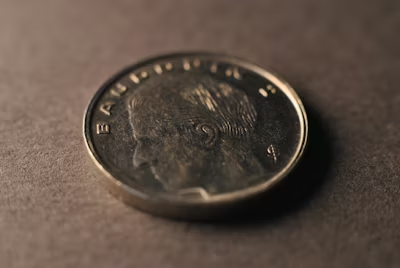Have you ever considered the weight of a single quarter? Perhaps you gather coins as a hobby, investigate money for work, or simply notice the sound they make. You might be surprised How Much Does a Quarter Weigh compelling a simple quarter can be – its heft, its materials, even its history. This exploration details the coin’s precise weight, follows alterations to its makeup and appearance through the years, then explains the lasting significance of these developments.
The Standard Answer: How Much Does a Quarter Weigh
A typical U.S. quarter – the one featuring Washington – tips the scales at 5.670 grams. It’s pretty simple, really.
A quarter tips the scales at 5.670 grams – that’s about 0.200 ounces. For years, its weight hasn’t changed; this consistency keeps everything working smoothly, from vending machines to banks and even laundromats.
To keep things honest, the Mint watches coin standards closely, sticking to exact details for each one. Because of this care, spotting real money becomes simpler – alongside a guarantee that trades remain equal.
Historical Overview: Has the Quarter Always Weighed the Same?
A quarter’s heft isn’t always what you’d assume – they haven’t consistently been made the same way over time. Since 1796, when they first appeared, U.S. quarters have changed quite a bit.
Early Quarters (1796–1838)
Early versions of the quarter – containing nine parts silver to one part copper – tipped the scales at 6.74 grams. Because they included so much silver, these held substantial worth simply by existing.
Got an older quarter? It’ll feel heftier than today’s coins – those earlier versions used more silver, so they weighed a good deal more.
Transition to Modern Quarters (1965–Present)
By 1965, making quarters with silver cost too much, so the Mint switched to a different metal. A new kind of quarter appeared – built from a mix of copper and nickel. From that point on, an official weight of 5.670 grams became the standard, offering a cheaper, less heavy option.
Composition: What Is a Quarter Made Of Today?

To fully answer how much does a quarter weigh, we also need to know what it’s made of. Modern quarters consist of two metals bonded together:
- Outer Layers: 75% copper and 25% nickel
- Core: 100% copper
The mix makes quarters tough, shields them from rust, also delivers their bright color. Curious about a quarter’s weight? Its steady 5.67 grams result from this careful blend of metals.
How Much Does a Quarter Weigh in Different Units?
Curious about How Much Does a Quarter Weigh actually weighs? Let’s look at it using various units
- Grams: 5.670 g
- Ounces: 0.200 oz
- Pounds: 0.0125 lb
- Milligrams: 5,670 mg
Want to know the weight of your coin collection? Perhaps it’s for a class project, a pastime, or verifying equipment – these useful tables make finding the overall weight straightforward.
For example:
- 10 quarters = 56.70 grams
- 100 quarters = 567 grams
- 400 quarters (or $100) = 2,268 grams (2.268 kg)
So when you ask how much does a quarter weigh, the answer is always the same — but scaling up helps in understanding weight distribution in large quantities.
How Much Does a Silver Quarter Weigh?
Folks who collect coins frequently wonder about the heft of older quarters – the ones crafted from silver rather than today’s metal mix. Those pre-1965 silver editions tip the scales differently, also boasting greater worth.
- Weight: 6.25 grams
- This alloy is mostly silver – ninety parts to ten of copper
- Silver Content: Approximately 0.1808 troy ounces of pure silver
Older quarters – those made before 1965 – tip the scales at a bit more weight, consequently fetching a price beyond face value; their worth fluctuates alongside prevailing silver costs. Therefore, when sizing up quarters from different eras, those containing silver will register as heavier also possess greater monetary significance.
Why the Weight of a Quarter Matters
You might wonder why it’s important to know how much does a quarter weigh. There are several practical and technical reasons for maintaining this exact measurement.
1. Machine Calibration
Machines that dispense goods, collect fees, or count change rely on precise coin weight for accuracy. A slightly off-weight quarter could cause errors – or allow fakes to slip through.
2. Counterfeit Prevention
A coin’s steady weight guards against fakes. If a collector – or even a machine – notices it differs from the usual 5.670 grams, doubts arise regarding whether it is genuine.
3. Coin Collecting and Numismatics
Knowing a quarter’s weight matters to people who collect coins – it helps them judge whether a coin is real or has been messed with. A little wear, rust, or someone altering it will change the weight, subsequently affecting its quality also what it’s worth.
4. Educational and Scientific Uses
Quarters show up in science class quite a bit – physics students might weigh them, or chemistry classes could use one to figure out density. It’s handy because everyone generally knows what a quarter should weigh, offering a solid comparison.
How to Weigh a Quarter Accurately
Want to check a quarter’s weight? You’ll require a sensitive scale that shows measurements in grams. Here’s How Much Does a Quarter Weigh:
- Employ a digital scale – one precise to 0.01 grams.
- Get rid of grime on the coin – it messes with how it’s read.
- Place on a level spot – a wobbly base gives false readings.
- A genuine coin should weigh around 5.670 grams. A little variation – up to 0.1 grams either way – is often just from handling over time.
Knowing How Much Does a Quarter Weigh helps spot wear, special silver versions, or even fake money.
Interesting Facts About Quarters
- The Standing Liberty quarter vanished by 1932, supplanted by the Washington Quarter.
- U.S. quarters showcased unique looks twice: between 1999 and 2008 they featured state symbols, while from 2010 through 2021, national parks took center stage.
- American money – even with new designs – remains exactly 5.670 grams, a weight that hasn’t changed alongside the artwork.
- A quarter’s weight is key when spotting rare coin mistakes – like those made with two hits or from the wrong metal.
Conclusion: So, How Much Does a Quarter Weigh?
These days, How Much Does a Quarter Weigh around 5.67 grams – that’s roughly 0.2 ounces. Yet, should you find one made before 1965, anticipate it feeling slightly bulkier; those silver quarters tipped the scales at 6.25 grams due to their composition.
A quarter’s heft matters, not simply as a fun fact but because coin enthusiasts, teachers, those curious about money’s story – all find its weight significant. Therefore, when you pick up a quarter now, you’ll grasp its exact weight alongside the reason this specification endured through two centuries.



2 Comments
xelcu6
oxmsz7